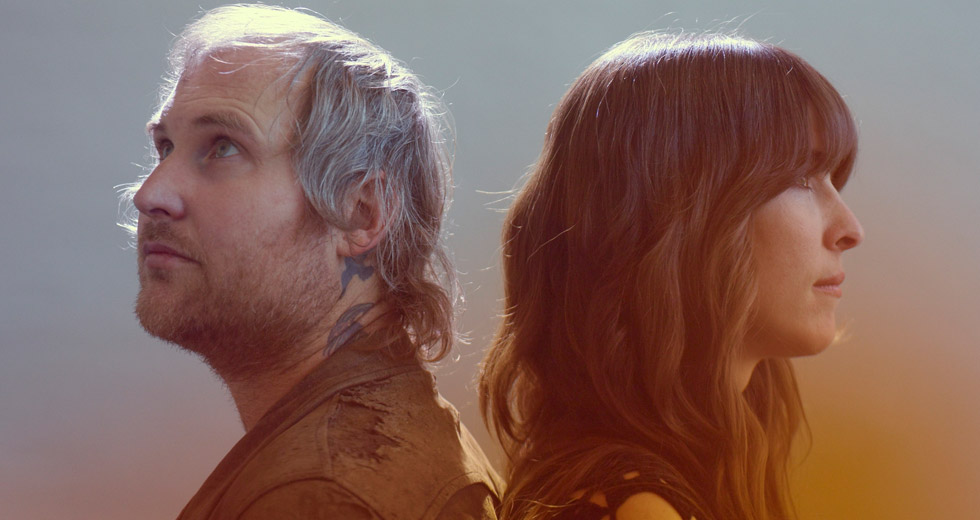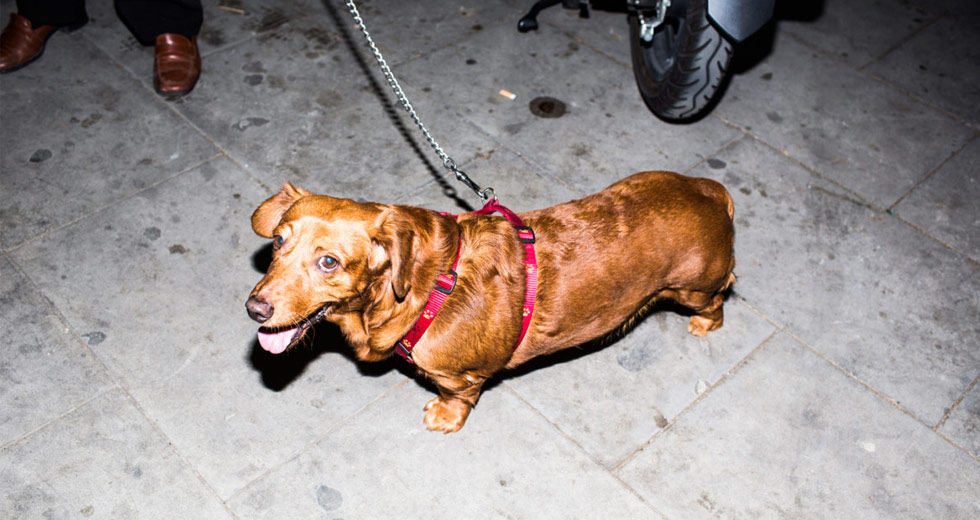Interview: Deru on Memory, Pico Projectors, and His New Album
The Friends of Friends producer talks with filmmaker Anthony Ciannamea about their new immersive album project.

You never know when or where inspiration will strike. For Benjamin Wynn, AKA Deru, it was at a yard sale in California in 2003, where he discovered a mysterious collection of articles, letters, and photographs that once belonged to a man named Jackson Sonnanfeld-Arden. The documents outlined Sonnanfeld-Arden’s strangely compelling theories, looping new-age mysticisms into early quantum physics. These artifacts provide the thematic underpinnings of 1979, out now on LA-based label Friends Of Friends.
The project is nothing if not ambitious. A collaborative effort between Wynn, filmmaker Anthony Ciannamea, designer Mark Wisniowski, writer David Chun, and others, 1979 is made up of audio, video, design, literary, and interactive components. Its centerpiece is The Obverse Box, a hand-held projector designed by Wynn and Winoski that contains the nine-track album and its accompanying videos. There’s also a website offering reproductions of the original documents and an expanded mythology, as well as an interactive gallery that listeners can submit their own photographs and text to. It’s an extraordinarily generous project, providing hours of material to explore and the mechanisms to generate more.
Wynn and Ciannamea shared their reflections on the project’s genesis and how technology is changing the ways we catalog our memories.
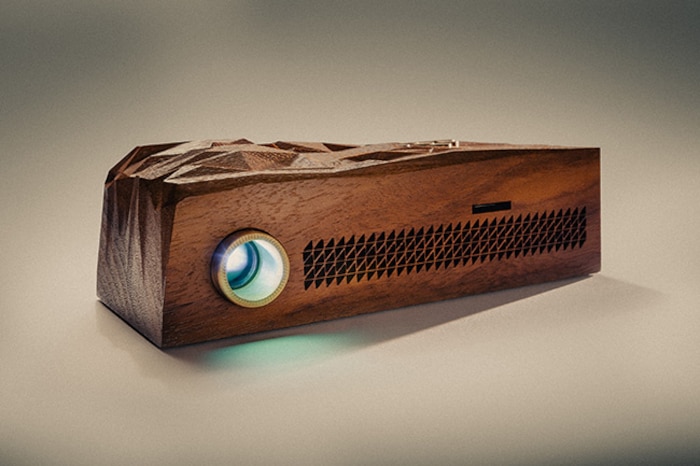
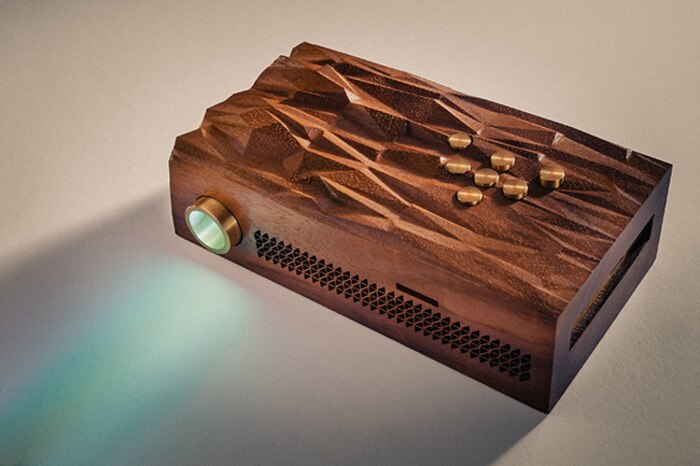
Tell me about The Obverse Box.
Benjamin Wynn: It’s a hand-held pico projector filled with my album, attached to a video for each song. We’re treating it like a time capsule, this holder of memories – collective memories – and one of the cool things about projectors in that capacity is that these memories can come alive. If you project onto glass, or fabric, or drapes, or the ceiling, it very much changes your experience with what it’s projecting.
Memory is a central thematic element of this whole project. Why did you want to base the project around exploring this theme?
Benjamin Wynn: I think there are a couple of reasons. One is that the music felt very human to me, very nostalgic and emotional, and it reminded me of scenes from my past and my youth and just sort of basic human emotions. The other was finding the time capsule itself, this box that I found in Glendale filled with this person’s life and documents and memories and photos and papers and stuff like that. I think it was a sort of combination of me writing this music that felt very emotional and human to me, coupled with wanting to turn it into something bigger that was also focused on our memories.
Could you give me a bit of a timeline for the project? I know you found the time capsule in 2003 – when did you start recording?
Benjamin Wynn: Much later. The music didn’t start until about a year and a half to two years ago and happened over a pretty short amount of time. I got Anthony and everyone else involved pretty much around that time as well. About two years ago, right Anthony?
Anthony Ciannamea: Yeah. It was about two years ago. Ben sent me this whole set of songs that he was like, “Look, I just bounced these to tape. I think I want to release an ambient album. I’ve been meaning to do this for a long time and it’s inspired by memories.”
There’s a lot of different people that worked on this whole project. I found myself taken with the... I guess you could call them liner notes – the mythology portion of the website. That was done by a guy named D.S. Chun, am I right about that?
Anthony Ciannamea: Yeah. David is a writer in LA. I met him through a blog that he invited me to contribute to. I was reading these short fiction pieces he was writing and I showed Ben and we knew this was the guy we need to help us weed through all these documents and letters and things that we found and kind of try to make sense out of it. Or at least try to re-contextualize and tell a story from it, even if it’s an incomplete fragment of some bizarre history.
Music is something that I put so much of myself into that I feel much better if I get... something, a memory, anything back in some sort of meaningful exchange.
Benjamin Wynn: He brought so much to the project that we couldn’t have done without him. His ability to pick out narratives and connect the dots was amazing. I think this whole project and the beauty of it for me has been that once Anthony and I decided that we wanted to make it into something bigger than an ambient album on Bandcamp. It just kept on snowballing. In the beginning, when we decided to make a hand-held projector, we had these very early images. One of the earliest images I had was of a boy digging up the time capsule in the backyard and then it gets re-buried, the idea being that it’s been there for generations, or potentially has. Once we had that established, once we had this whole theme of memories, it just allowed so many... this project could have gone in so many directions, and is still going in so many directions. I think it’s because that initial idea was large enough to let everybody in.
Anthony Ciannamea: When I got involved with it, I saw myself in a role of taking these spare pieces and making it a cohesive story. Because we’re pulling from all these different sources of inspiration that are all related to one another, but also somewhat unrelated, at face-value. We have the contents of the box, Ben’s focus on memory and nostalgia in his own life, and then kind of weaving those things together to create a visual history of it and make it something that’s easily digestible for the internet generation. Not easily, I mean, it still requires some attention...
Benjamin Wynn: The thing that I’m proud of with this project is that I think we managed to tell a story that, no matter how you want to consume it, is cohesive and enhances every other aspect. For instance, even the galleries of memories online – that was sort of a reaction to something that I never felt great about, which was just giving away music. Music is something that I put so much of myself into that I feel much better if I get... something, a memory, anything back in some sort of meaningful exchange.
Anthony Ciannamea: Yeah, that was really important to you early on, actually. That was one of the first things you said when you sent the album over, that you were thinking about asking your audience to give you something in return for the album.
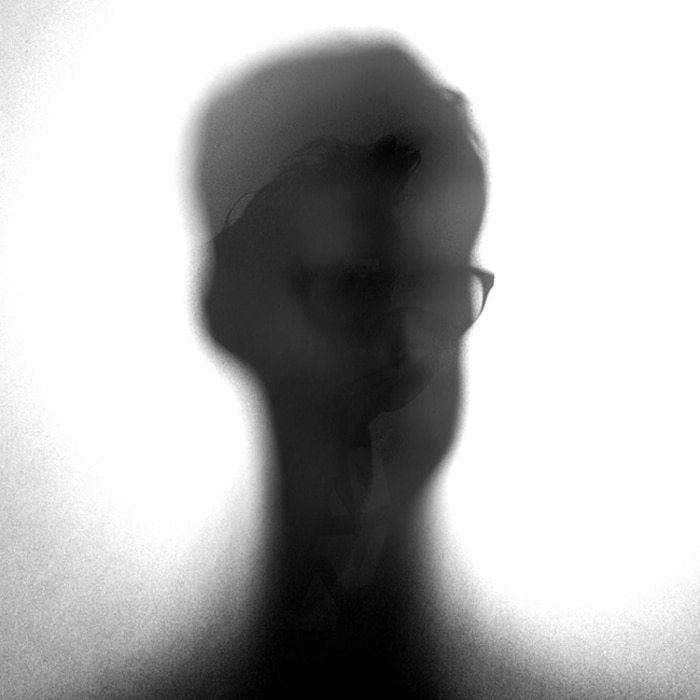
It strikes me as a project that you get as deep into as you want to, and everyone’s experience with it will be really unique. I listened to the record just walking around Toronto and then listened to it again today while reading through all of the mythology and it feels very different depending on how you approach it, which I think is really cool.
Benjamin Wynn: That’s one of the things I’ve always loved about music and art in general. When you put it out in the world you can’t imagine how it’s going to be consumed, you can’t control that and that’s part of the beauty of it. Art becomes so contextualized with whatever it is that happens to be going on in that person’s life. I remember being in Spain driving along the coast and the music that I was listening to on my headphones will be forever associated with that moment, you know?
That’s actually what my name, Deru, means. It’s an Indo-European root of words like duration and tree, and I love the idea that with trees you kind of, like, grow roots with all these different people around the world that consume whatever it is that you’re putting out. Each one of those experiences is totally unique but it combines to form this thing that’s greater than all those parts.
I think more now than anything, we fetishize those artifacts. Every app on your phone is designed to make it look like it came from the last couple of decades.
Part of that, too, is that I feel the experience of listening to music has been diminished within the last five to ten years, in that now that we have the access to every song ever made within a second, there is less patience given to the experience. That’s another thing that this projector tries to do, is bring an experience back to listening to music. One of the really great things about pico projectors is they’re the best when you turn off the lights and get ready to explore. You prepare to watch them, to have the experience. I think that that preparation puts people in the best frame of mind to listen to music in the first place, which is great.
A lot of the video clips on the website use found footage, Super 8 clips – those would have all been made with purpose-specific pieces of technology. Even ten years ago, a home movie was being made on a device that was being used specifically to shoot home movies. Now, we’ve bundled all of our tech into devices that you listen to music on, do your banking on, make your phone calls, take your photos, shoot your home movies – how do you think that’s changed the way we use technology? Do you think we’ve lost something in that bundling?
Anthony Ciannamea: I think more now than anything, we fetishize those artifacts. Every app on your phone is designed to make it look like it came from the last couple of decades. There’s also this, like, social fetishization of remembering the terrestrial thing that those artifacts actually meant for those formats. Hearing that tape just reminds you that it’s electricity and magnets...
Benjamin Wynn: Yeah, it’s analog. All those things are defects that affect the sound or the image or whatever it is. They impart their own personality onto it, and I think that that will continue.
Anthony Ciannamea: The format though, is really inconsequential when you think about it, especially when you’re talking about content creation. It doesn’t matter that my thing combines all these purposes versus fulfilling one purpose. The thing that’s changing most is the consumption side of it. One of the things we risked with this idea was it being too simple. Every Thursday we look at photos on Instagram, Throwback Thursday, but rather than doing that, rather than seeing 500 photos an hour, this project is about slowing it down. It’s about being able to literally just engulf yourself in the beauty of those analog artifacts, just, like, right on your face, close-up. You’ll see it manifest itself digitally in the projector videos, as well.
Benjamin Wynn: It might sound really pretentious but I think that the gallery is mainly for the people that upload. When I started this project I went and looked through all of my old photos, and that’s just an amazing experience, it’s something that people should do every once in a while. I think that going through your old photos and picking one out and writing about it is a really valuable thing to do, and it’s more for that person than for me or this project. There’s something that’s powerful that happens when you get a whole collection of those.
How do you think the technology we’re using today is changing the way we remember?
Benjamin Wynn: I think that we’re documenting much more, and I think that does change the way you remember things. Memory isn’t perfect. It’s fluid, I should say, so I think it depends upon your situation, your context, your reason for trying to remember it. Those all change what your memory actually is. Having much more documented probably does change that in a way, but it also might make us remember more. I mean, seeing a photo of an event doesn’t give you the memory of it. It kind of triggers the memory, but it doesn’t trigger the emotional context, necessarily. It doesn’t give you all these other details. I think it can help, but it doesn’t fill it all in.
I think one of the problems that we might have is now there’s so much more information, how often do we actually go back and look through it, or organize it, or archive it in any kind of way? The beauty of having Polaroids or film is that you go into a box and sitting there, and this is all just going to be sitting there unless it gets lost, so it’s much easier to consume, I think.
Anthony Ciannamea: I want to actually argue the opposite. I would say that the consumption part of it is way easier because you don’t have to physically go to get it out of the closet. You have it at your disposal at all times. Because of that frequency, the granularity of memory is much greater. The quality might not be and physicality might not be, but definitely the frequency makes it so that the granularity of memories is way, way greater. It’s not as sacred anymore, though. Going in and finding those Polaroids is sacred because you can touch them and you just want to put them up on your wall. That’s the exact dividing line for why we made the projector instead of an app or something – valuing the object of documented memories over the frequency in consumption speed.
Benjamin Wynn: That’s the part that I’m ruminating on right now, is that memories are really two things – it’s a trigger and then a response. Now we have way more triggers, and I guess we’ll have just as many responses.
It may be that when you’re beset by so many triggers, your response reflexes will be overwhelmed at some point.
Anthony Ciannamea: It’s totally reflexive, too, if you think about it, because the fact that we have access to this volume of real-time, visual things, it’s taken us out of reality because we tend to view things through the small window in our pockets or on our desktops. I mean, there’s no shortage of opportunities in life to make memories even if you are an iPhone addict like we all probably are, but reflecting on them... it changes our attention span.
There are still some elements of the project yet to be revealed. You’re going to be touring the work, which I presume will have a strong visual element. Could you talk about your plans for the live show a bit?
Anthony Ciannamea: I think the same way we made it a goal to put the music out there as a physical object, we want to make the live experience feel like there’s the presence of physical ephemera. Our goal is to create a dimension in the stage set-up that uses real optical manipulation. I’m going to be performing with light the same way Ben is going to be performing the music, and that’s kind of the centerpiece of the live show. From a video perspective, I don’t know how to describe the content other than it being a meditation on all of the footage and memories and things that we’ve collected over the course of the project. It’s really going to be the real world, three-dimensional, physical embodiment of that. Really focusing on structure and grain and very fundamental light-shaping.
Benjamin Wynn: We’re trying to put the same spirit that happens when you hold one of these projectors in your hand into the live show. What’s most fun about holding one of these projectors is playing with it, making the image an inch small and projecting it on a wall, or projecting it through glass, or through prisms, onto rain, onto fire... It very much changes your experience, and when you hold one of these things, that’s just what you kind of naturally do. I hadn’t actually had this experience until I started this project, holding projected light in my hand. It’s been around forever but it’s not something that a lot of people do, and it’s kind of magical in my opinion. We’re trying to place that same emphasis in the live show as well.
One of the goals we’ve been going for with this project is to keep it lo-fi and physical. It’s like a combination of technology that could have existed in the 1900s and modern technology. We’re going to try and bring some of the analog warmth back into the show.
How does that dynamic make itself felt in the music?
I hadn’t actually had this experience until I started this project, holding projected light in my hand.
Benjamin Wynn: The songs were almost little meditations for me. They were almost like sound poems. They’re very simple. They have few elements, they evolve slowly, they explore one idea and then they’re done. They’re like these little moments in time, almost like a memory. They’re not overly complex and I think that’s their beauty. For me, one of the challenges was believing in that and not over-complicating it. A lot of times these songs would form in an evening, and maybe I would spend a week working on them, but lots of times everything I would try to do would just make them less good. I just needed to believe in that initial idea.
The other part was that it was a little bit freaky because I had never released music this naked before, this pared down and simple. There’s no nice sounding kick drum and there’s no snare, and there’s nothing that I can feel comfortable hiding behind.
The decision to record these to cassette tape, that was kind of a catalyst for the whole thing. I’d been scouring Craigslist and eBay for old cassette tapes, and four-tracks, and reel-to-reels, and I just happened upon this one tape deck that has a warble to it. Everything you put into it, when it comes out... it just sounds like memories. It’s very emotive. I very purposefully enhanced the bad qualities of tape. Well, not the bad qualities. What am I trying to say...
The tapeness.
Benjamin Wynn: Yeah. I enhanced the very things that made it tape, that made it that medium. Like we were saying, the poor qualities of tape are what make it appealing to us now, so I brought those up.
We’re far from alone in recognizing or correlating the tapeness of sound with memory. That’s what playing music back sounded like when we were younger. For kids that are 13, 14 or whatever today, what do you think will be their version of tape hiss? What sounds will they correlate with memory?
Benjamin Wynn: Yeah, I don’t know. It might be like 128-bit MP3s. You know what? It will still be vinyl honestly. Vinyl will be around for a long time.
Anthony Ciannamea: There’s a small amount of people who love the sound of old samplers right? The digital crunch.
Benjamin Wynn: Yeah, I think that every time, I think that it’s a little bit hard to say because I think as technology moves on, everything improves. Maybe we’ll be able to experience much more bass as the microphones improve, and the speakers improve, and the fidelity of all things improve. I think that we become nostalgic for things that have less fidelity in any form.
